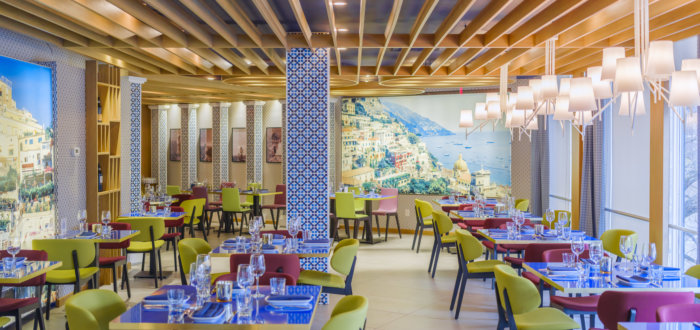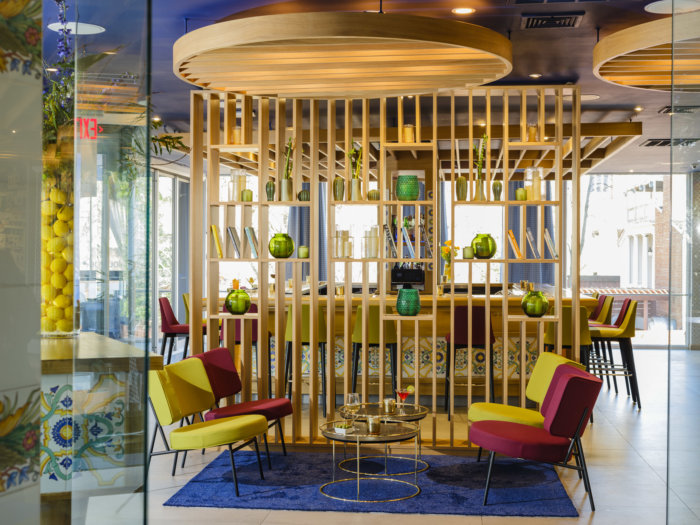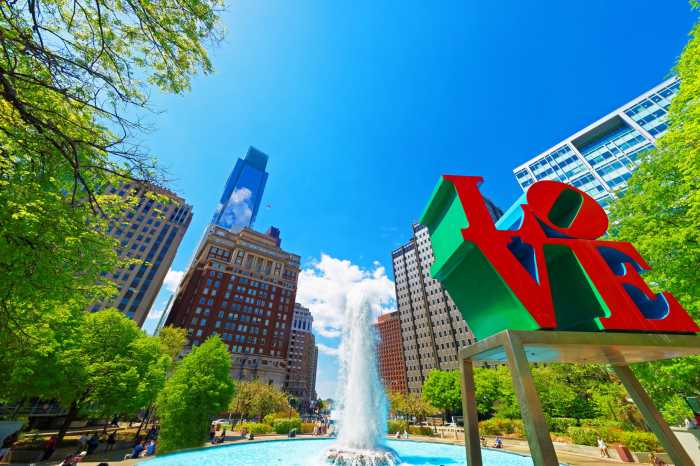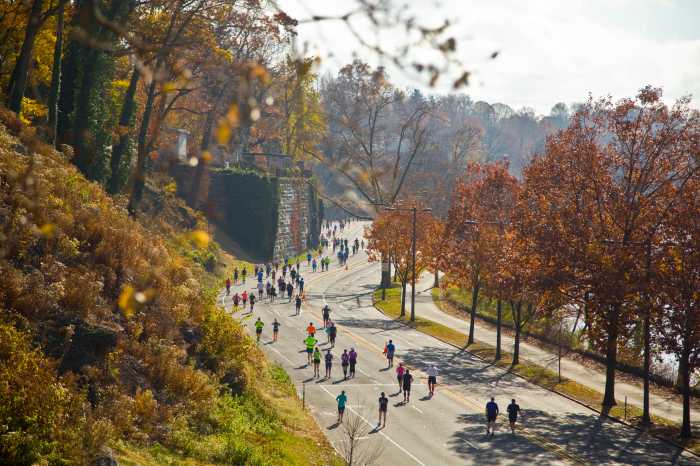The old saying “If it ain’t broke, don’t fix it,” apparently doesn’t apply to Aldo Lamberti.
Last week, the Philadelphia-South Jersey restaurateur, his family and their associates at the Pietro Del Vaglio Studio took their always-crowded, seascaped, pastel-envisioned Positano Coast Italian restaurant and made it anew. That meant adding primary colors to its seating, warm woods in its design-scape, a mix of elegant/eclectic chandeliers, wallpaper and tiles, plus a fresh menu featuring grilled calamari, crispy skin orate with caper berry-tomato vinaigrette and a generous veal chop Parmigiana washed down by a new cocktail list with items such as Tatuaje de Prision of banhez mezcal and amaro alta verde.
Then again, change is a constant for Lamberti as he’s shifted the artwork, design and diverse regional Italian menu – even the name – of his Old City landmark since buying it in 1991.
Lamberti and Metro’s A.D. Amorosi chatted briefly before Positano Coast’s re-do’s premiere.
Amorosi: Why did you take over that triangle corner of Old City? I remember it as a bar with a dance-floor before you got there.
Lambert: I loved the space, found it to be so interesting. It encompasses the whole block and it’s on the second floor, which gives it a unique feel. We took over the space in October of 1991, knowing it had that history as City Lights and City Bites.

Amorosi: How would you define what that space has been, from its start? No matter what, the Philly restaurant has been casual but with a fine dining edge, while your N.J. flagship, Caffe Aldo Lambert, is all fine dining, with a concentration on fresh seafood and whole fish.
Lamberti: We started in Old CIty as Pasta Blitz by Lamberti, which a touch more casual, with a traditional Italian menu. In the late 90’s we changed the majority of the restaurants to Lamberti’s Cucina. The menu and dining style remained similar to Pasta Blitz’s concept. In 2004, we steered away from the cookie-cutter concept and with our Italian friend, designer Pietro del Vaglio renovated three of our spaces simultaneously to become a tour of Italy, with Positano Coast in Philadelphia, Tutti Toscani in Cherry Hill, N.J. and Milano Modo in Mount Holly N.J. The Positano Coast space was completely remodeled to give out guests a taste of the Amalfi Coast.
Amorosi: How did it utilize the pandemic’s time to your best advantage?
Lamberti: Though we didn’t know anything in advance, we knew outdoor dining ultimately would come and planned accordingly. In addition, we truly had so much support from loyal guests. The phones started ringing right away with people asking if we would be offering takeout. It was incredibly uplifting. We used the time of shut-down to start Positano Coast’s renovations, but had to push everything back because our containers from Italy were delayed. Then, the United States shut down entry to European foreigners until November 2022, and our Italian carpenters, who designed and built the wooden additions to suit, were not able to come until January 2022. Our furniture, wooden ceilings, chandeliers etc. all sat in storage for the last two years. We were incredibly excited when we got word that Paolo Sesti (the carpenter) and his team could finally travel overseas. That being said, in terms of outdoor dining, what we did was to bring our entire indoor dining room furniture downstairs and used that for our sidewalk café.
Amorosi: Let’s talk about changing the look and feel of Positano Coast.

Lamberti: The original Positano Coast, and this version, were designed by our friend Pietro del Vaglio who has studios in both our home town of Monte di Procida and in Florence, Italy. When we decided that Positano needed an update, we went directly to him: this time, keeping with the idea of the Amalfi Coast and Positano, he designed the space to reflect an Italian Villa. He created it from a different point of view, from the internal to the external. It is like someone in a villa in Positano looking out. An example of such a villa would be Villa Cimbroni in Ravello, so warmer materials were added, like the wood paneling, wallpaper, and the black and white photos – that give a sense of a dining rooms of Mediterranean houses. The colors of the chairs were chosen for a different aspect to represent the fruits and colors of the Positano region (the chairs and tables are also Italian). The chairs are reminiscent of grapes, lemons, colors of typical fruits that are edible. The black and white photos are vintage create a sense of nostalgia that someone brings with them after a vacation – a memory that eventually starts to fade – becomes a long, lost memory.
Amorosi: And the flavors? You’ve changed the P-Coast menu quite a bit.
Lamberti: Our current update reflects lighter dishes, since spring and summer are coming. Some of my favorite new dishes include the Scamorza, which is fried smoked mozzarella and something that you will find on many menus in Positano Italy. I’m a fan of simple dishes, and our Spaghetti al Pomodoro is just that, extra virgin olive oil, basil, fresh tomatoes and a touch of garlic. It is a classic dish from where we come from in Italy, and a staple in our house. Not new to the menu, but another favorite, is our pan-seared pork chop with cherry peppers. It’s something that both my mother and my mother-in-law both used to cook and we have it on the menu both at Positano Coast and Caffe Aldo Lamberti.
Amorosi: Since you mentioned mothers and cooking, would you say staying family focused after 30 years is a big part of who you are as a restaurateur?
Lamberti: My family is extremely involved with the restaurants. Both of my daughters as well as my wife are part of the business, and I think that is part of the reason we are so successful. In addition, as I mentioned above, many of our staff members have been with us a long time and it does very much feel like a family within our restaurants. I feel that guests appreciate that family feel and it is one of the reasons they return.





























